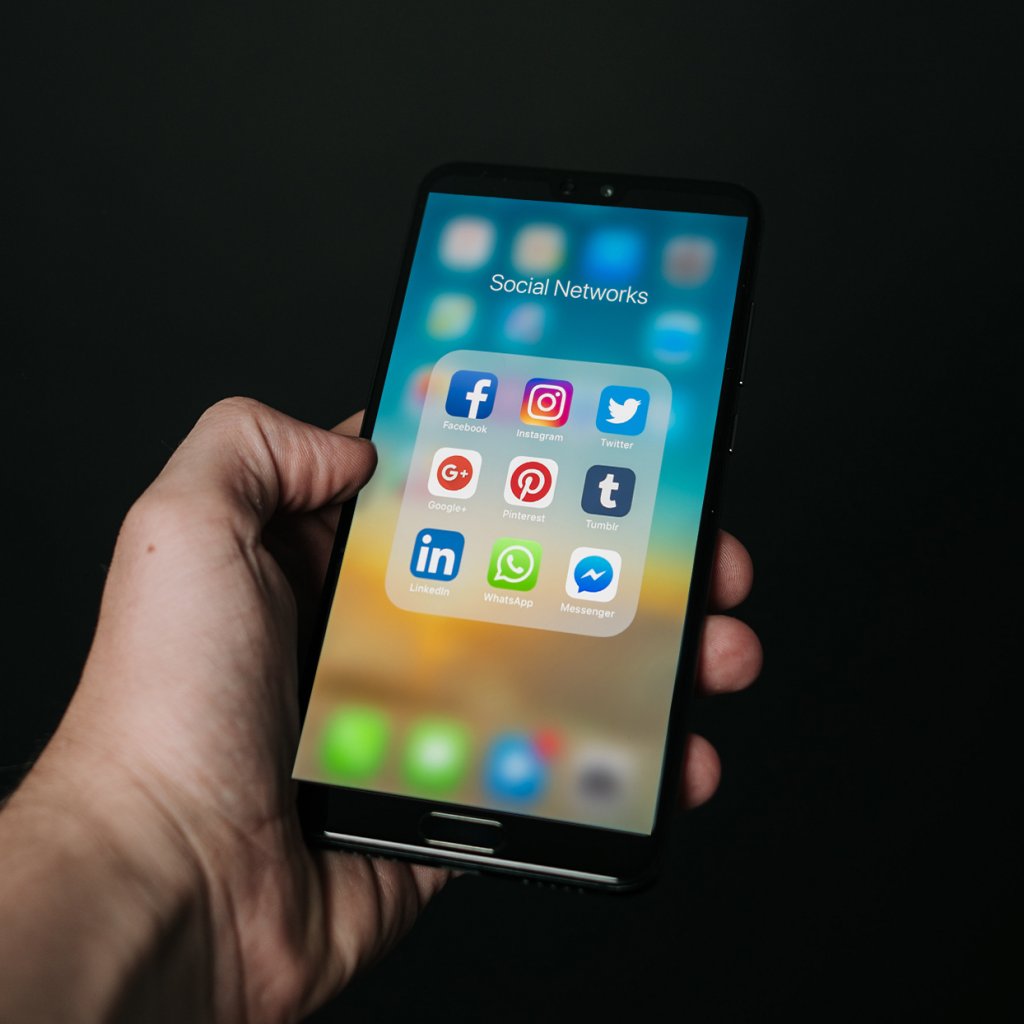Reimagining D2C for FMCG: it’s time to break the mould
What if FMCG brands reimagined D2C beyond the cookie-cutter approach?
FMCG brands, like many others, have been tempted by the promises of D2C – greater flexibility, higher margins, stronger brand presence and more direct relationships with customers. The internet is flooded with pieces selling that dream. But in doing so, D2C is often presented as a plug-and-play solution that will magically deliver it all.
Those with experience know better.
D2C isn’t a one-size-fits-all model. Even seasoned FMCG brands find themselves juggling the tensions between owned channels and retailer relationships. Too often, D2C is treated as a side project or logistical channel, disconnected from brand and customer. This is partly why we’re seeing so many high-profile D2C failures (CNBC).
The truth is, winning in D2C takes proper thought. It’s not about throwing bulk products and a subscription model online and waiting for success. It’s about asking: why would anyone want to buy from you directly?
With over $213 billion spent on D2C in the US last year alone, the opportunity is real, but so is the competition.
That’s why we created this guide: to explore the seven characteristics of desirability that drive successful D2C experiences, built not just to sell, but to connect.
Desirability: the foundation of D2C success
Yes, D2C offers better margins and a clearer path to loyalty. But ultimately, people don’t buy because a channel is available, they buy because it’s desirable.
Below are seven characteristics that can help brands build that sense of desirability. They’re not a checklist. Not every brand needs to do them all, but each one offers an opportunity to strengthen the direct customer relationship.


1. Service as a value-add
As repeat purchase rates slow across FMCG, more brands are looking at service and aftercare as ways to deepen relationships.
Take Wild: a refillable deodorant brand that’s built a base of over a million customers by leaning into aftercare through refills – a trend we’ve also seen spike in skincare search data.
Or Scooch, a pet supplement brand that adds value post-purchase with a health monitoring app (and even an ‘anal gland academy’ – yes, really).
Where to start:
- Audit your offer: where does service already exist, and where can it be optimised?
- Understand your audience: use customer data, reviews and feedback. What are your customers searching for? What are they talking about? Map their real needs.
- Benchmark the category: what are competitors doing well in service? Where’s the gap? Use this to establish core expectations of your customers.
- Pilot and iterate: measure, learn and adapt over time.
2. A differentiating experience
In an oversaturated market, standing out is everything. D2C is an opportunity to surprise, delight and create memorable brand moments.
Take Who Gives A Crap: a toilet roll brand that’s completely flipped expectations with bold packaging and a purpose-led message. People are talking about them, unlike your average supermarket brand.
Or Coca-Cola’s Pixel Point: a virtual world built around a limited-edition flavour, part of a broader push into TikTok-first experiences and an example of using a channel to elevate messages.
To create differentiation:
- Map the full customer journey to find key moments you can elevate.
- Explore tech integrations that can add delight without friction.
- Stay true to your brand. Inauthentic ‘wow moments’ rarely land.
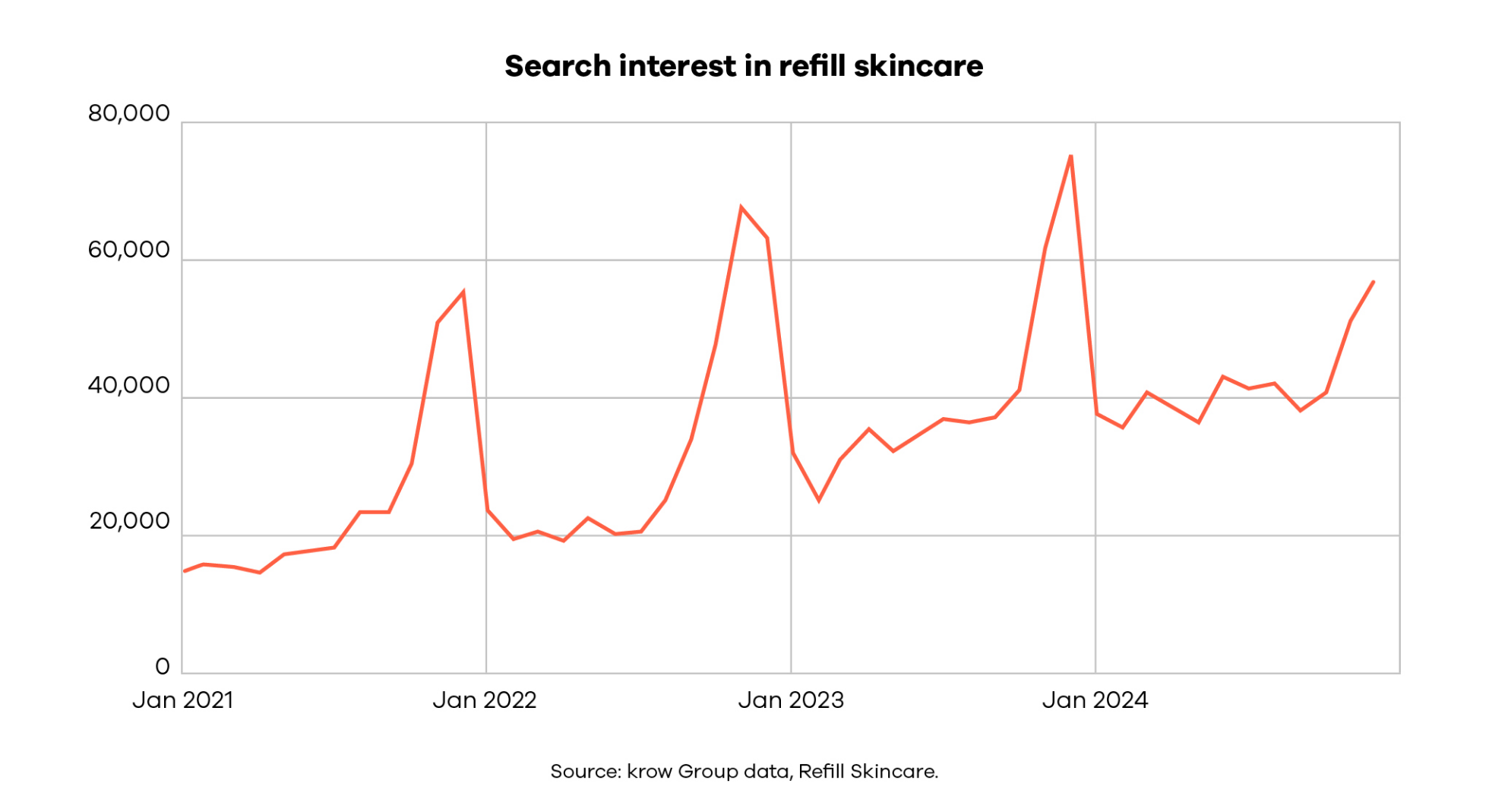

3. Subscriptions that make life easier
Subscription models are everywhere. But the winners don’t just offer convenience, they offer value and thoughtfulness. Search demand for coffee subscriptions continues to climb. Why? Because it helps people try new things, simplifies their lives and offers a touch of joy.
Nespresso does this well. Their model doesn’t just deliver coffee; it spreads the cost of machines, personalises flavour recommendations and builds loyalty. It’s not simply about utility; it’s about making customers feel cared for and heard.
But while subscriptions can simplify life for customers, we need to focus on the value they can bring. To stand out, brands need to think creatively about how to create great experiences and address a real customer pain point.
The key is to connect utility and personalisation while being mindful of the unique value your brand can deliver in a subscription.
To do it right:
- Test viability: is repeat purchase behaviour already there? Would they benefit from repeat automation? If so, at what frequency?
- Marry utility with personalisation: build features that feel tailored and simplify life for your customers. Understand usage patterns, pain points and what can be done to help.
- Create something meaningful: explore ways to make your subscription unique. Consider VIP extras, exclusive content and loyalty programmes.


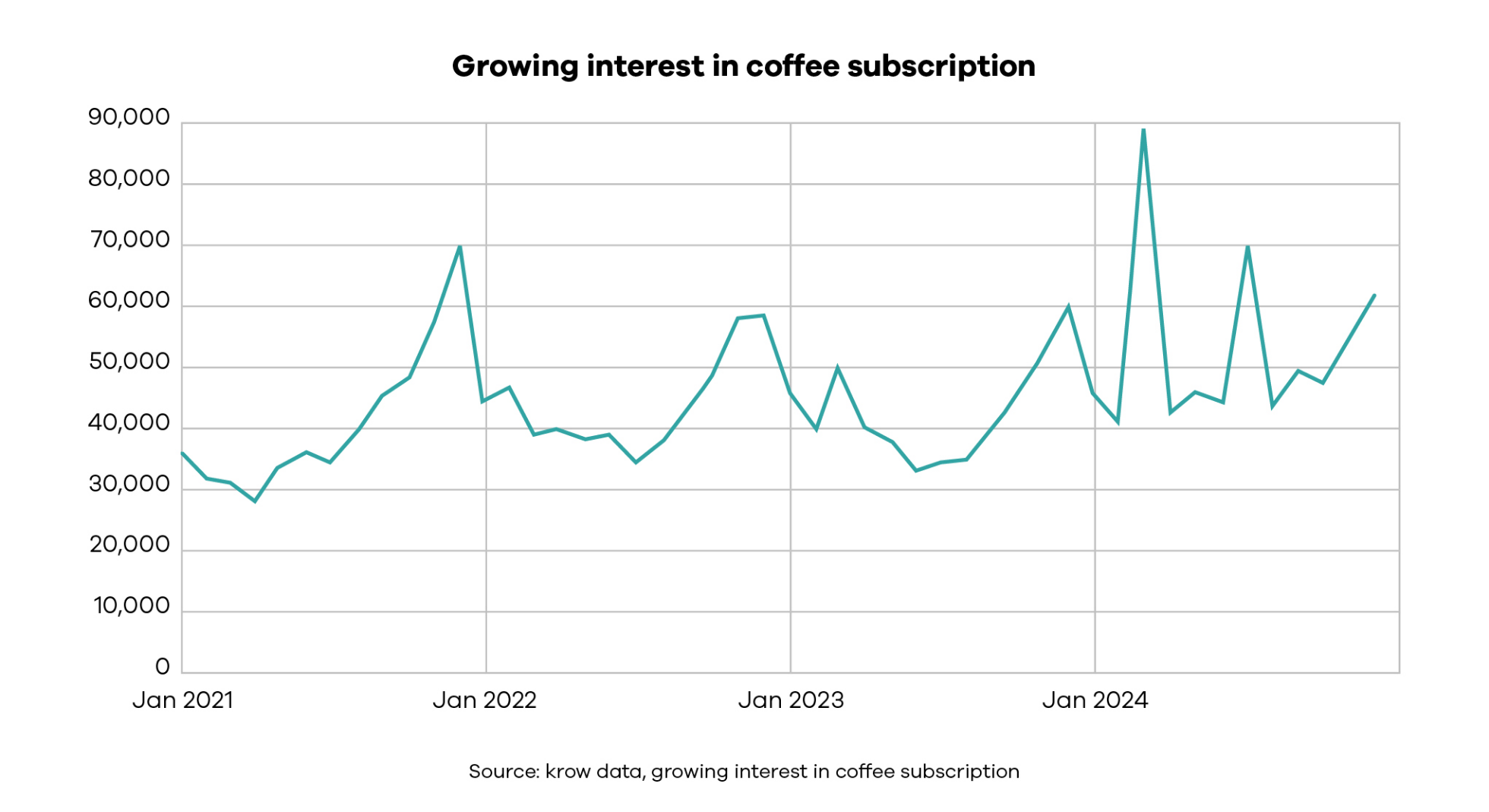

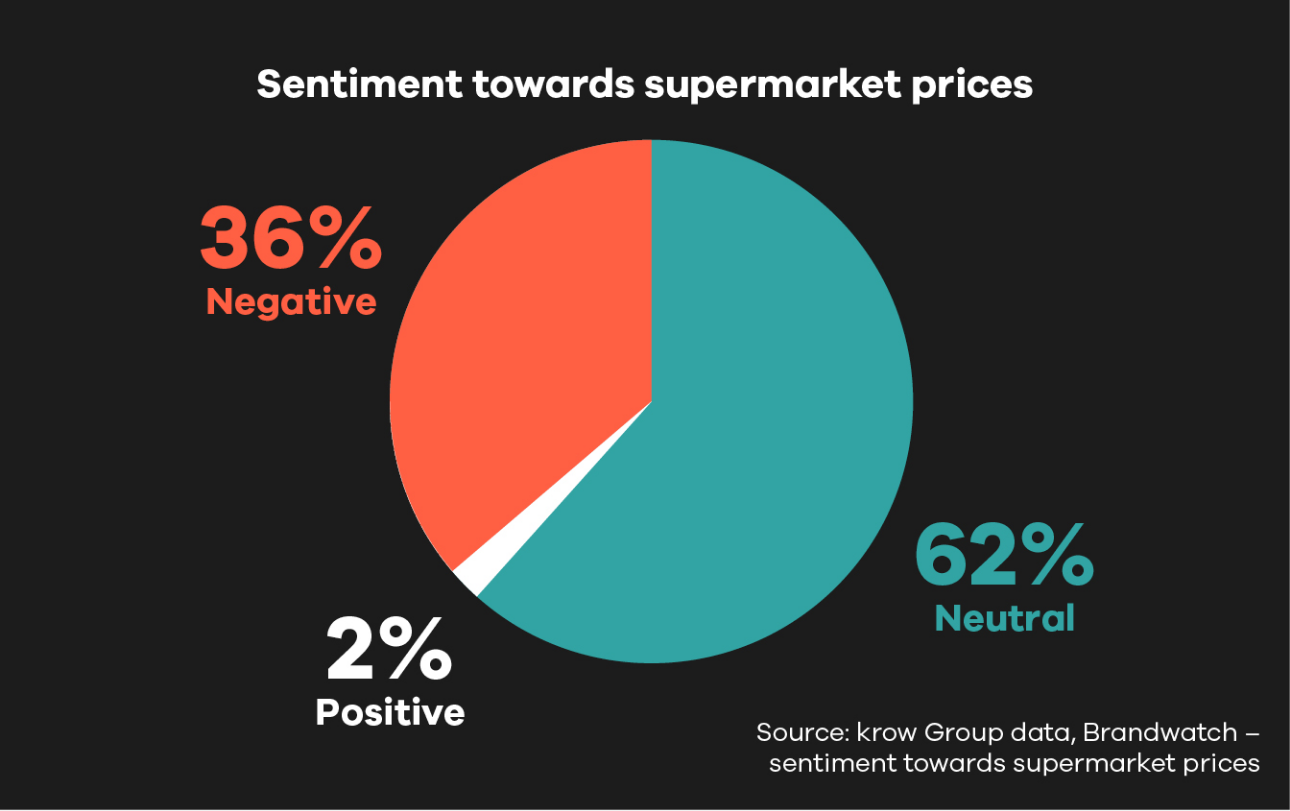
4. Delivering better value
With consumers becoming increasingly price-conscious, D2C is a chance to define value on your terms, not just price. While historically supermarkets and marketplaces may dominate on convenience and competitive pricing, D2C brands can offer tangible, rich value. That might mean bulk buying, loyalty perks or exclusive SKUs for your customers. It’s also a chance to be transparent, break down the price, show your value and make it easy to understand.
Brands such as Harry’s have seen growth by offering affordable razors while growing a community their audience is proud to be part of. Who Gives A Crap combines price with sustainability by bulk-selling options that offer value.
While value isn’t all about pricing, great pricing is a key to set D2C apart from a marketplace, and it can drive powerful results in acquiring customers. Above shows conversational sentiment around prices in supermarkets over 30 days – and it’s negative all-in. Customers see pricing as a way for brands to be transparent.
To explore value as a differentiator, we recommend:
- Price benchmarking: ensure you’re monitoring the price of your brand and competitors across retailers and marketplaces, within an appropriate reporting cycle to understand trends.
- Be transparent: communicate value clearly (cost per day, savings over time, etc.). Show your audience why your D2C pricing delivers better value.
- Understand cost and offers in context: use customer insights to introduce offers in the context of their journey – e.g. what is a good onboarding experience.
5. Unlocking niche audiences
One of the biggest advantages of D2C? The ability to reach niche and emerging audiences that traditional retail often overlooks. People come to digital spaces with diverse types of buying intentions – a birthday present for a cat, shopping for train enthusiasts, corporate gifting – audiences are asking for brands to mix it up.
Search data shows there’s growing interest in ultra-specific gift ideas, everything from ‘gifts for dads who want nothing’ to ‘gifts for electricians’ or even ‘gifts for lazy people’. There’s clearly an appetite for tailored, thoughtful options – and smart brands are responding.
Tony’s Chocolonely is a great example. They’ve expanded into corporate gifting with ethical, branded products that align perfectly with seasonal demand, especially around Christmas.
Popular and unusual search interest is currently in areas such as:
- Gifts for ‘dad who wants nothing’
- Gifts for ‘electricians’
- Gifts for ‘Italians’
- Gifts for ‘lazy people’
This shows us there’s a world of audiences to explore.
How to get started:
- Finding niche audiences: analyse trends and customer feedback to identify under-served and unique audiences.
- Create tailored experiences: to meet the unique preferences of your niche audience. This could be bespoke products, different subscription models etc.
- Communicate exclusivity: elevate the messaging around how exclusive something is through the direct platform.
- Targeted campaigns: support launches with targeted, relevant campaigns to drive awareness.
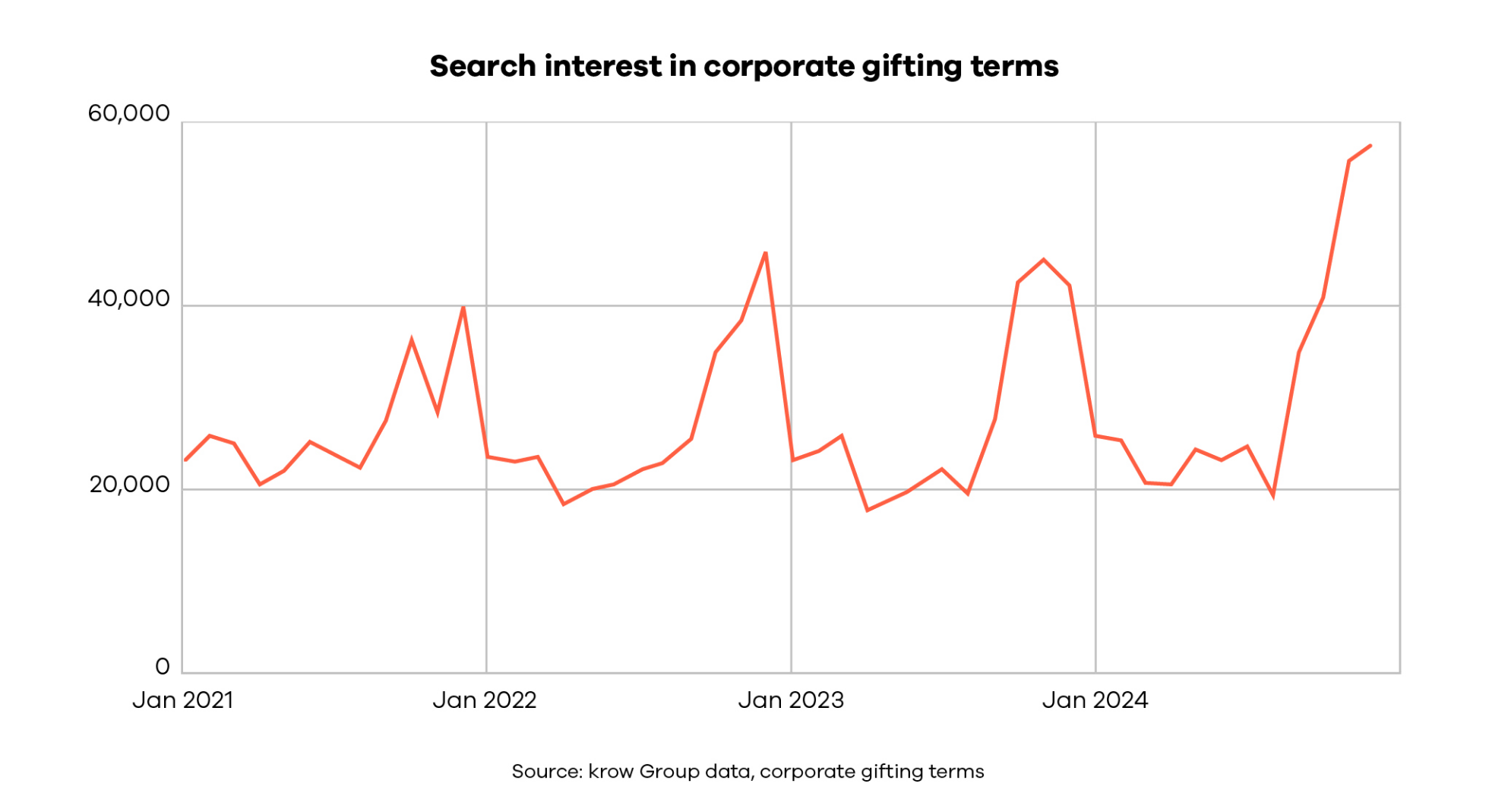

6. A community I care about
Strong D2C brands aren’t just selling – they’re building community. When customers feel seen, heard and part of something bigger, they stick around. Beyond just selling, a great brand builds spaces where like-minded individuals can connect and be part of something.
By owning the customer relationship and first-party data, D2C has an advantage in creating a catalyst to build a community. For example, Sephora has built an active and passionate online forum where beauty enthusiasts exchange stories, recommendations and advice. Communities elsewhere such as Reddit can also be a community space – for example, r/Glossier (60k members) and r/CocaCola (24k members) highlight the opportunities to create a peer-to-peer community.
r/Huel on Reddit is a great example of a community built around shared values and passions. Brandwatch digital listening highlights the sentiment of joy – with conversational themes around all aspects of fitness and products, elevating the brand’s experience.
For niche audiences, such as those navigating gluten-free lifestyles, a community can provide a trusted space for customers to share recipes and challenges, and to discover new products – all while reinforcing the brand as a part of their journey.
Communities are also goldmines of insight. They’re great for spotting emerging trends, collecting feedback and strengthening loyalty by fostering deeper emotional connections.
How to build community:
- Leverage existing platforms: tap into communities. Use Reddit, Facebook Groups or Discord channels to test ideas.
- Facilitate (don’t dominate) conversation: give prompts, questions or themes that encourage audiences to share experiences and expertise. Moderation is key to preventing your community from going silent.
- Celebrate shared challenges and values: whether that’s fitness, food allergies or fandom.
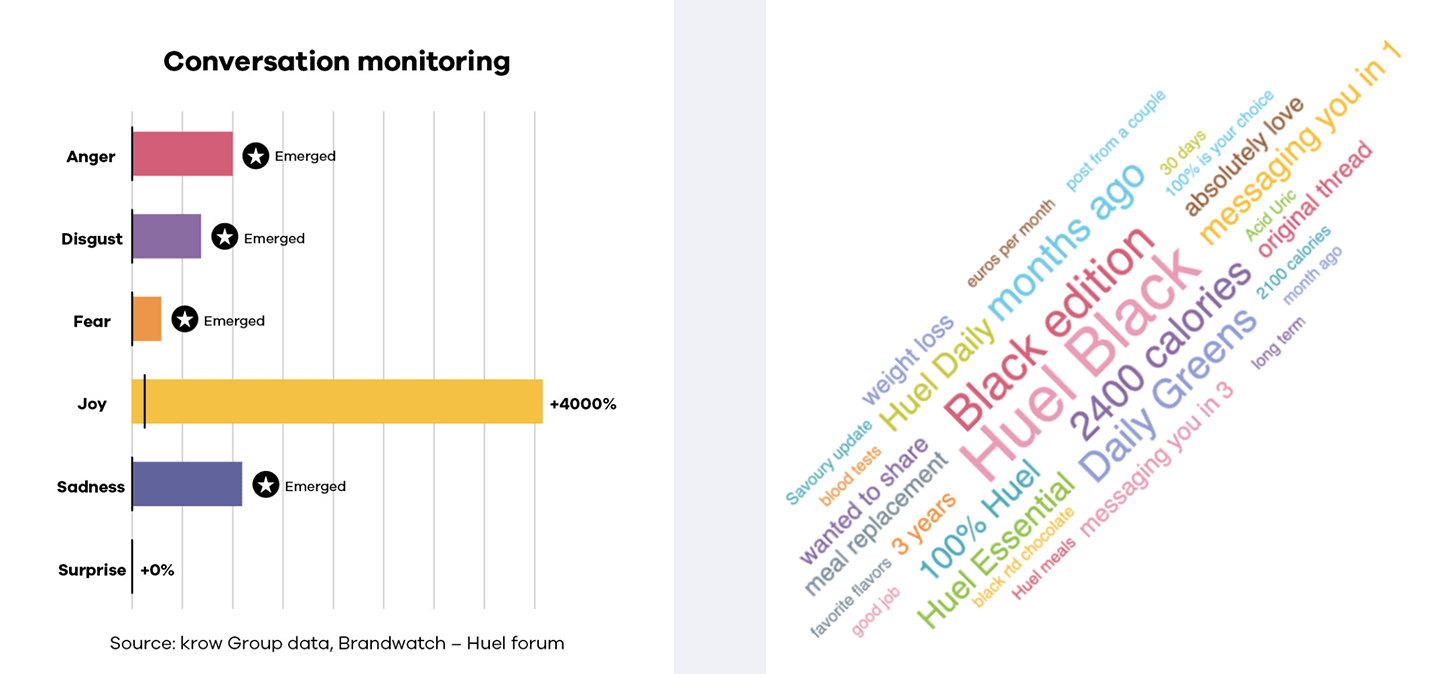

7. Unique products people actually want
FMCG is saturated, and uniqueness is a powerful lever for brands wanting to differentiate. We’re seeing D2C brands use personalised or exclusive products that can’t be found elsewhere to connect with consumers’ desire for individuality. From bespoke designs to made-to-order items, the ability to tailor products to personal tastes or special occasions can transform a purchase into an experience.
OREOiD allows customers to create custom Oreos with unique designs, and different colours and messages. With over 300,000 views on TikTok and 700 monthly mentions, it highlights the appeal of creative, customisable products.
M&M’s offer personalised M&M’s wedding favours (3,800 searches per month) and M&M’s party favours (1,460 searches per month), showing that exclusivity and personalisation creates a strong competitive edge.
To identify the right opportunity, you can start by:
- Mapping opportunities for personalisation: what aspects of your product could be customisable in the context of your customer experience.
- Create exclusivity appeal: position products as exclusive, limited editions, one-offs. Consider how this could integrate with social channels.
- Lead with UX: ensure customisation is intuitive and doesn’t add friction to the buying journey.
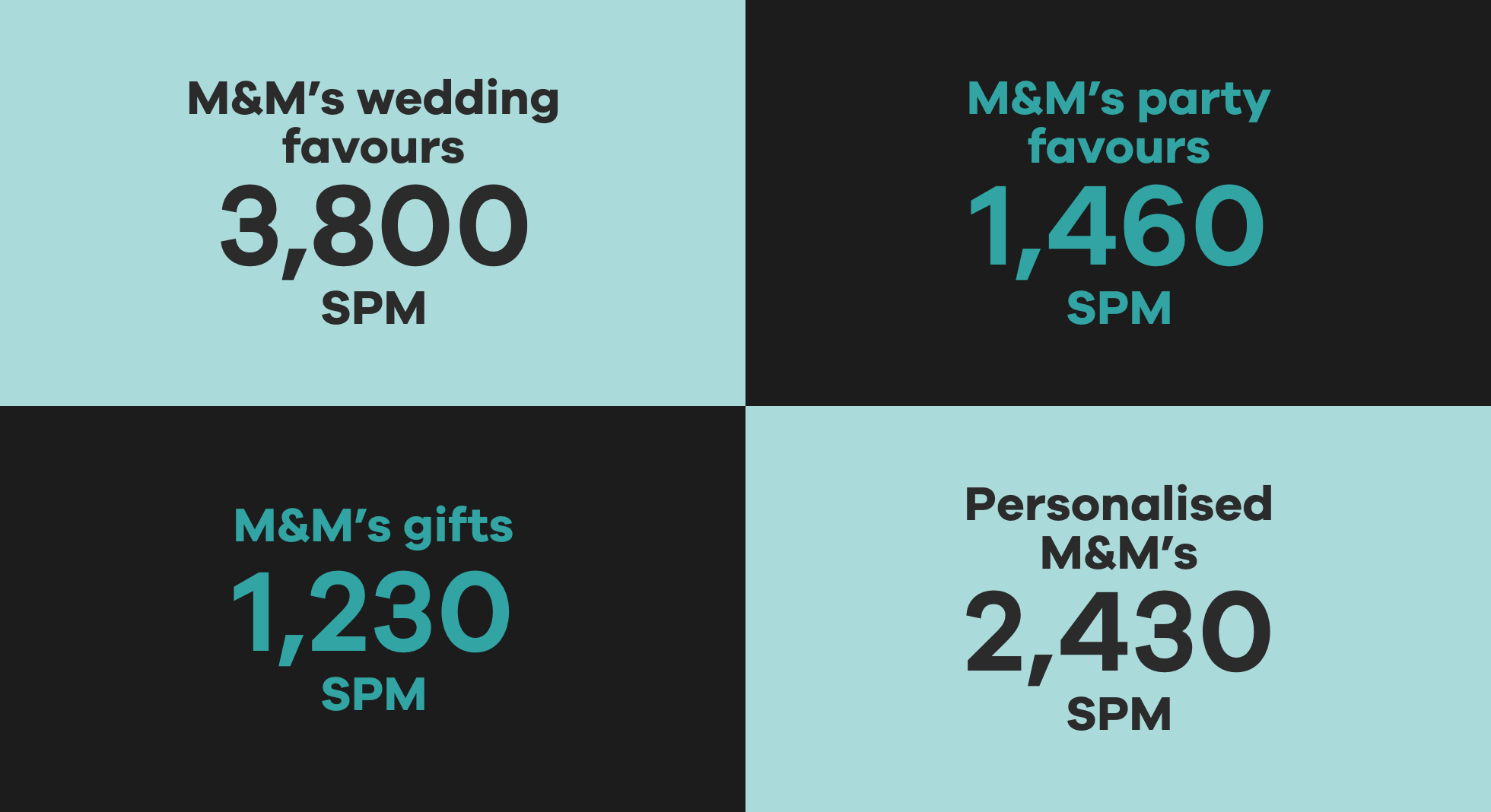

Do you even need D2C?
Sometimes, the boldest move is knowing when not to go D2C.
Brands should weigh up the investment (money and time) and infrastructure against their audience’s needs and behaviour. Some customers might not want to buy direct, and that’s okay.
There are other creative ways to connect:
- Quick commerce: platforms such as Deliveroo offer urgency and utility.
- Retail and marketplaces: tap into built-in audiences.
- Social commerce: meet people where they already are.
Key questions to ask:
- What’s the real value of buying from us directly?
- Do we have the resources to do it properly?
- Is the customer actually asking for it?
- What role does D2C play in our long-term strategy?
- Are there operational or regulatory barriers we haven’t scoped?
Sometimes a hybrid model is the answer. D2C plus retail, quick commerce or social can meet customer need at the right moment.
D2C is what you make it
D2C isn’t just a sales channel; it’s a chance to rethink how your brand shows up in the world. Done well, it builds emotional connections, unlocks new audiences and puts your brand in the hands (and hearts) of your customers.
But it only works when it’s grounded in desirability. Ask yourself: why would someone want to buy from you, and not just anywhere? Use these seven characteristics as prompts, not prescriptions. Start with the customer and build from there.
Because great D2C isn’t just about selling. It’s about moments, connections and communities that turn customers into advocates and transactions into relationships.
Let’s start by asking the right questions.
CHAT TO US
Have a customer experience challenge you’d like to discuss?
Contact Sam Bettis, Digital Strategy Partner
sam.bettis@krowgroup.com



